Decoding a Tiffany Glassmaker’s Secret Notebook
The small leather-bound book was used by Tiffany Studios glassmaker Leslie Nash to record recipes, designs, and personal notes on glass chemistry.
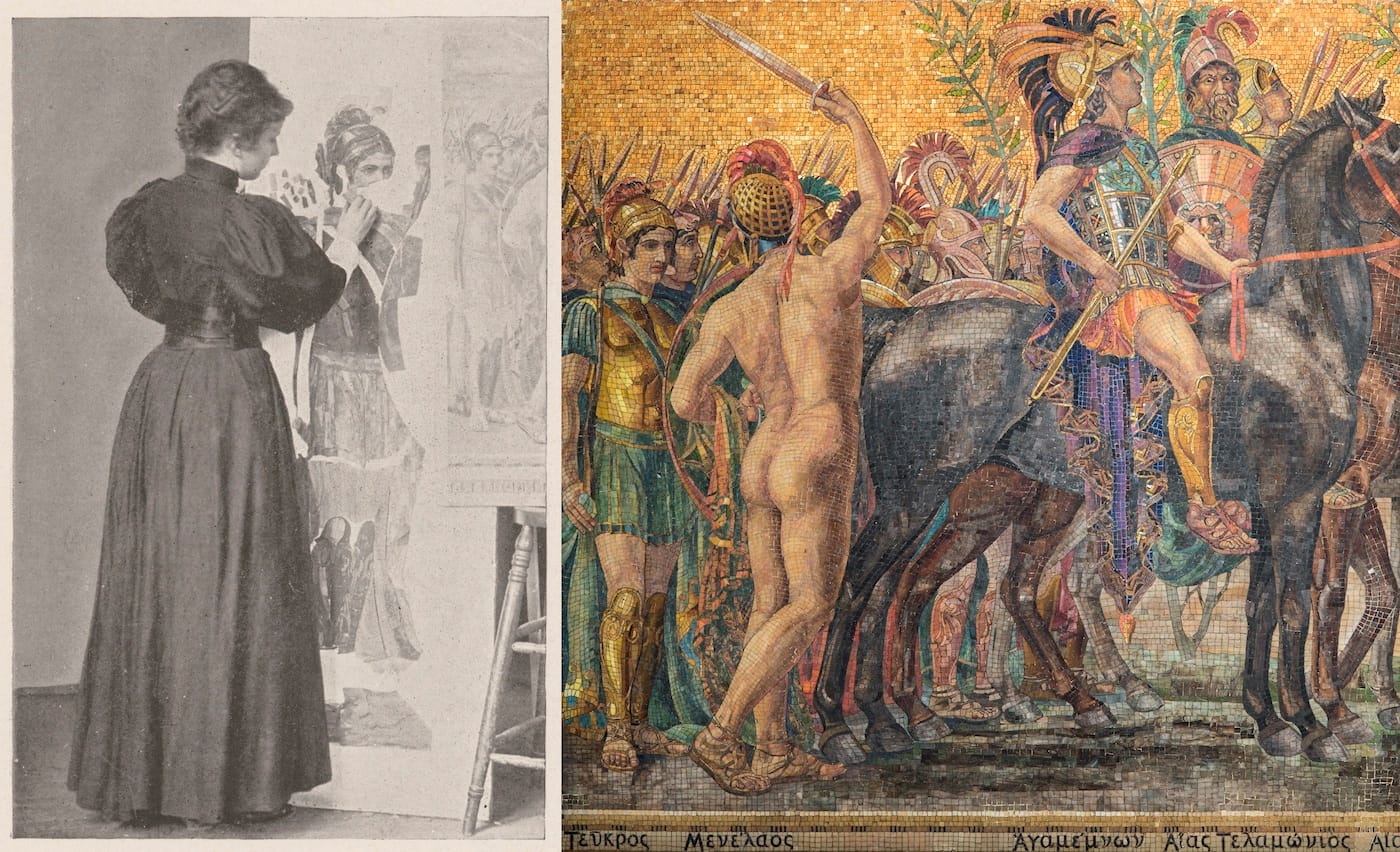
Scrawled in a notebook on view at the Corning Museum of Glass’s Rakow Research Library is: “Important: this is the key to all formula; keep it secret.” The small leather-bound book was used by Tiffany Studios glassmaker Leslie Nash to record recipes, designs, and personal notes on his father Arthur’s glass chemistry. Sometimes the was knowledge so secret, it was written in code.
“Arthur and Leslie Nash used this code to protect their recipes and ideas,” Rebecca Hopman, Rakow Library outreach librarian and curator of Curious and Curioser: Surprising Finds from the Rakow Library, told Hyperallergic. “This kind of information was often closely guarded by glassmakers and/or companies — it was proprietary and they didn’t want others stealing or profiting from their innovations.”

The display of the notebook coincides with Tiffany’s Glass Mosaics opening May 20 at the Corning Museum and organized with the Neustadt Collection of Tiffany Glass in Long Island City, the first exhibition to concentrate on the famed design studio’s mosaics. Many innovators who worked for Louis Comfort Tiffany get overlooked behind his name (such as Clara Driscoll, whose lamp designs are featured in the newly renovated Tiffany gallery at the New-York Historical Society).
“Arthur Nash created the recipe used for Tiffany’s favrile glass and recorded it in his notebooks,” Hopman said. “He apparently only ever told Leslie, one of his sons, how to make the glass — and this was only after Leslie took over his father’s department. Leslie states that Tiffany never knew the formula.”
In a 2015 blog post about the notebook, Hopman stated that Leslie once wrote: “[Tiffany] never gave me credit for my inventions — it always was Tiffany glass Ha Ha — but my Dad will come into his own some day for the years of research he did on the invention of irridescent [sic] glass.”
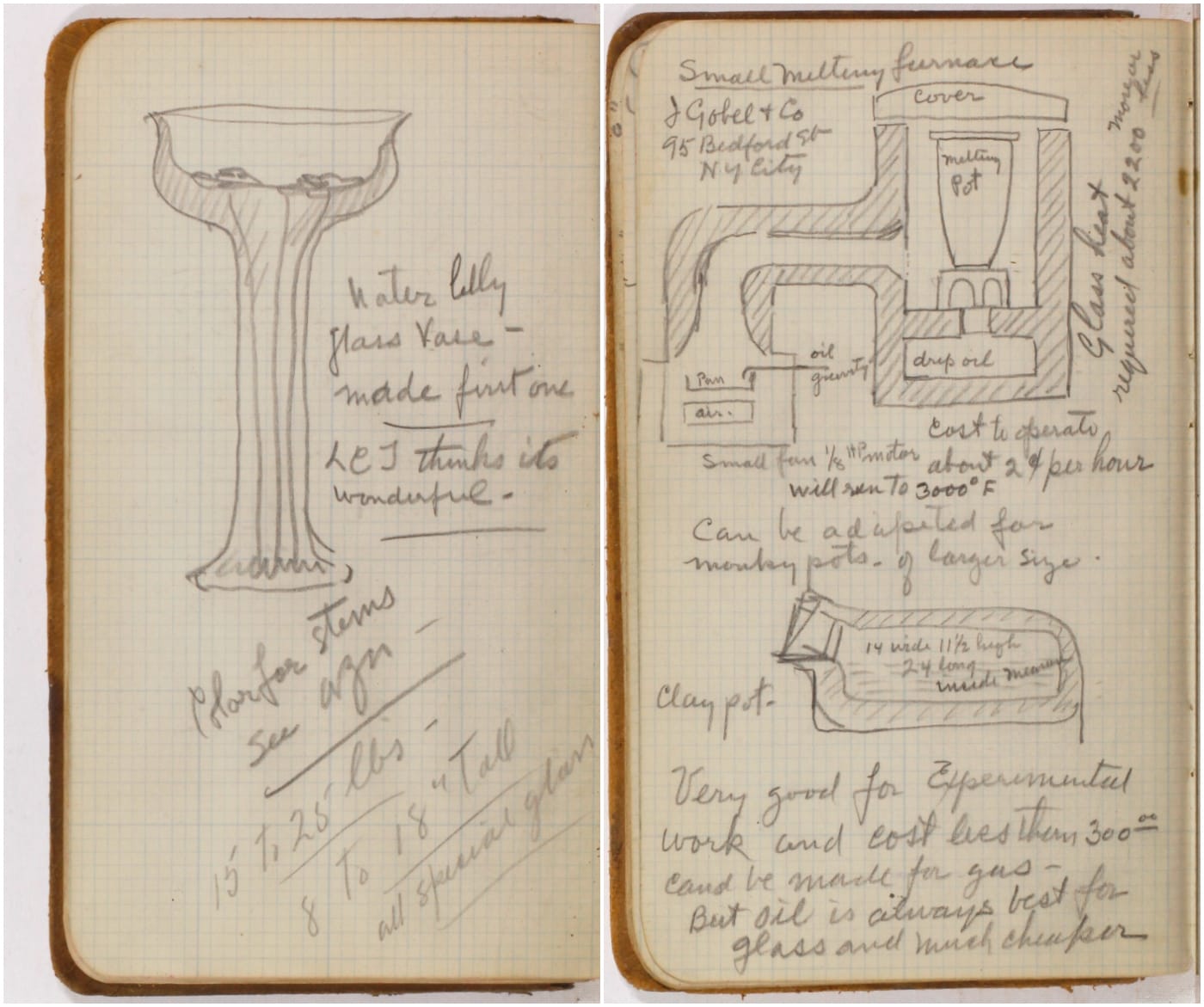
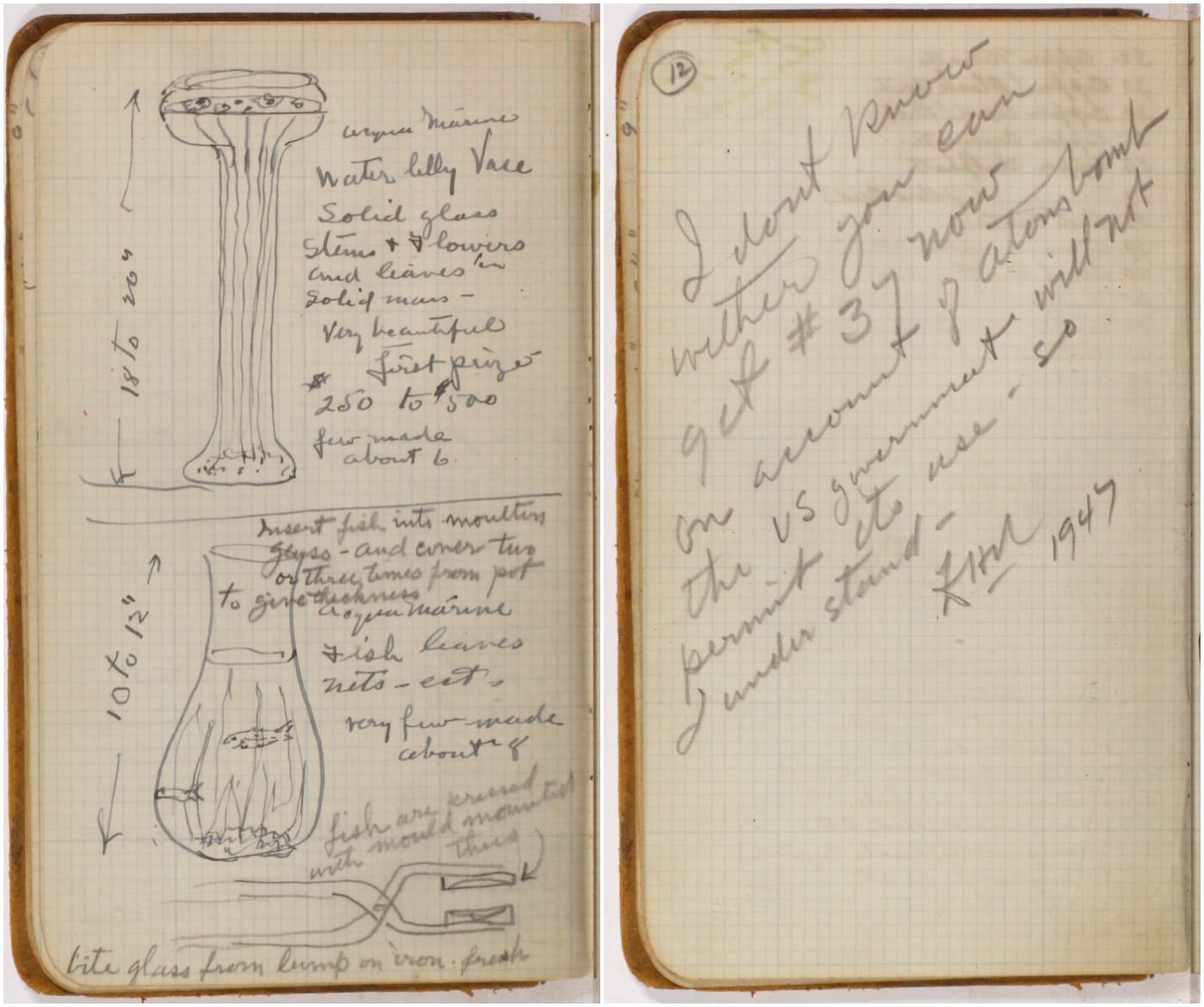
Two of the Nash notebooks are installed in Curious and Curioser, along with a sketch Leslie drew of his lab at Tiffany Studios in Corona, New York. A digitized version of the book is online at the Rakow Research Library Catalog, including pages where Leslie considered the availability of uranium due to atomic bombs, and designed a water-lily glass vase and glass mosaic for the Cathedral of St. John the Divine.
While stained glass windows may be the Tiffany’s most widely known work, the company’s contributions to early 20th-century design stretch from the architectural mosaics featured in Tiffany’s Glass Mosaics to silver bookbinding. Many of the mosaics are still in situ; for example, the freestanding 1914 Swan Memorial in the Bronx’s Woodlawn Cemetery that was recently restored. So the exhibition will not just be a chance to delve into this artistic legacy, through digital displays and 50 objects dating from the 1890s to 1920s, but also the hidden history of inventive people who created that distinct Tiffany shimmer.

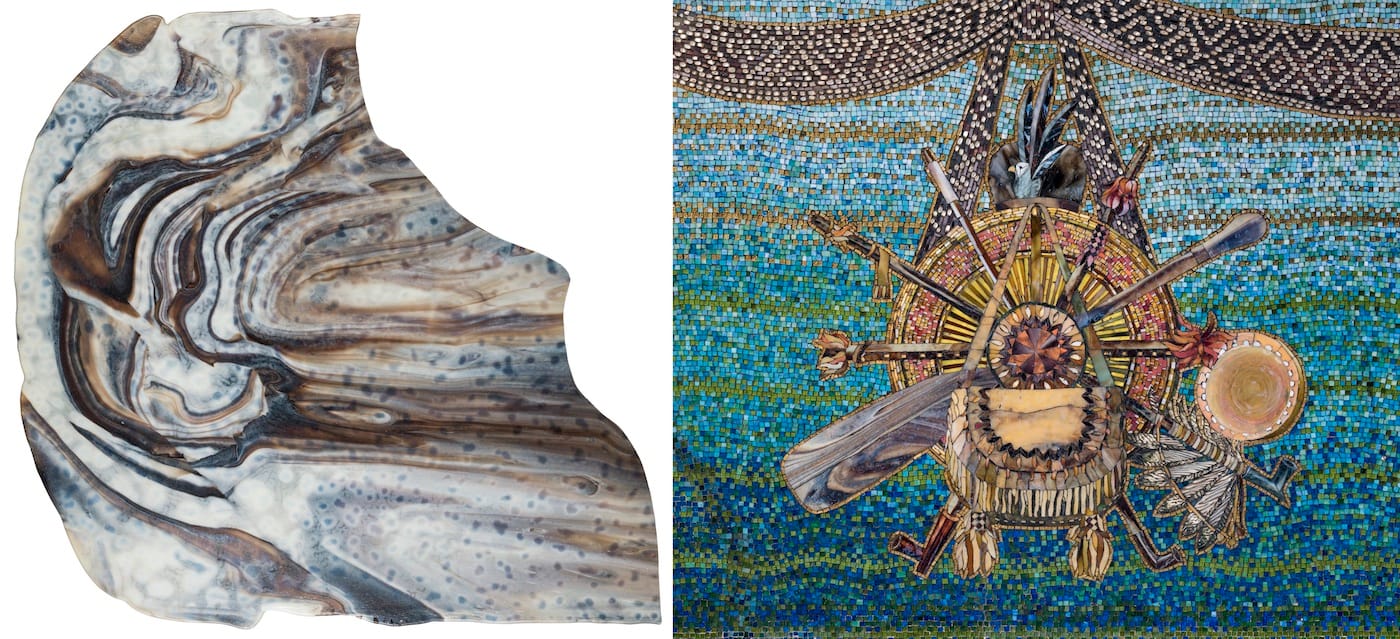

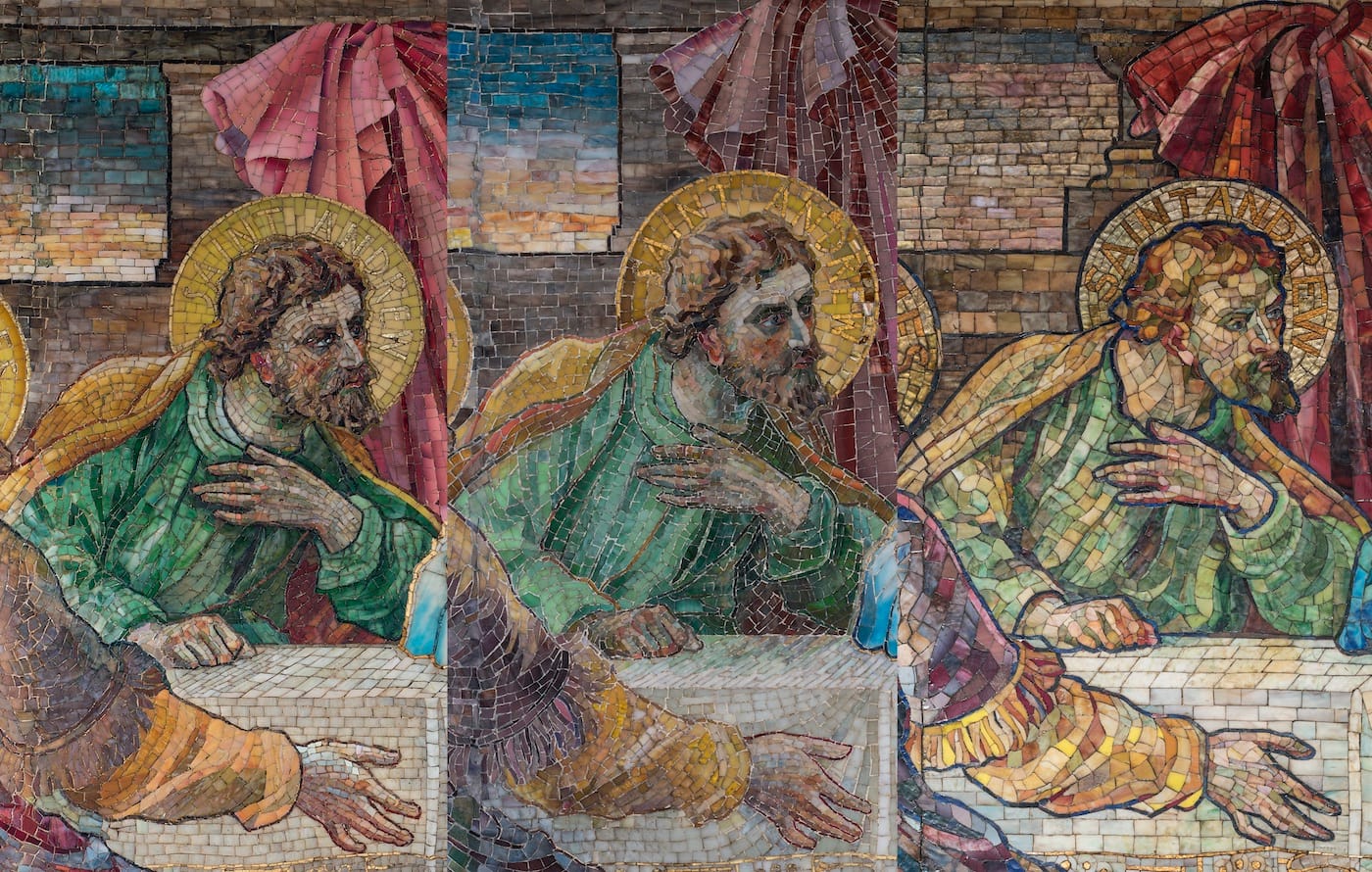
Tiffany’s Glass Mosaics opens at the Corning Museum of Glass (One Museum Way, Corning, New York) on May 20 and continues through January 7, 2018. Curious and Curiouser: Surprising Finds from the Rakow Library continues at the museum’s Rakow Research Library through February 17, 2019.





